Matchmaking, animal shelter style

It’s no secret that we love matchmaking at Best Friends. From pairing canine buddies in Dogtown to connecting adopters with pets to helping animal lovers find their dream volunteer gigs, much of what Best Friends does is about facilitating relationships that create lifesaving magic. (How often have we said some variation of this? “If you can’t adopt right now, consider fostering this five-week-old kitten named Small Fry.”)
Recently, our matchmaking prowess went into overdrive through the Prince and Paws Shelter Collaborative Program. It’s a program that, through the simple concept of peer-to-peer mentoring and collaboration, saved 6,525 pets in its first year alone, and is on track to save thousands more in 2022.
Named as a tribute to Prince, a stoic Dalmatian mix, and Paws, a magnificent tuxedo cat (both adopted from Best Friends Animal Sanctuary by the program’s lead investor and visionary partner), the Prince and Paws Shelter Collaborative Program makes strategic matches between organizations that have reached a save rate of 90% and shelters that are striving to save more lives in their communities. The mentor organizations share insights, learning and resources with fellow shelters to boost their save rates.
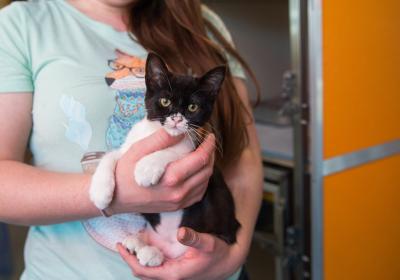
Matchmaker, matchmaker
In January 2021, four peer mentor organizations were paired with three shelter fellows for the initial pilot of the program. The ongoing goal is to cultivate a partnership with fellows and give those shelters guidance and tools to bring their save rates for cats and dogs to 90%, and to sustain that no-kill benchmark. Best Friends supports each match with funding, training and other resources.
For Tangipahoa Parish Animal Services (TPAS) in Louisiana, the mentorship match with Brandywine Valley SPCA in Delaware (a no-kill state) began with an emergency transport connection and blossomed into a collaboration that included embedding a Brandywine staff member at TPAS, building a veterinary clinic and starting a community cat program. In 2019, Tangipahoa’s save rate was 22%, which means 78% of the animals who entered the shelter didn’t make it out alive. By the end of 2021, the save rate had skyrocketed to 81%.
[Communication, collaboration and cooperation]
While Best Friends has provided hands-on mentorship directly to shelters for years, the shelter collaborative program is unique. It’s an acknowledgment that Best Friends can’t be everywhere (as much as we’d love to have that superpower) and we don’t need to be. Nearly half of the 4,404 animal shelters in the country are no-kill, and with support and funding, more of them can step into the role of mentoring others.
“We’ve had so much regional success with lifesaving, and what this program does is get more groups involved in mentoring, beyond just us,” explains Brent Toellner, senior director of Best Friends national programs. “When I got started with Kansas City Pet Project, there was only a handful of places I could call for help and support, but now there are thousands.”
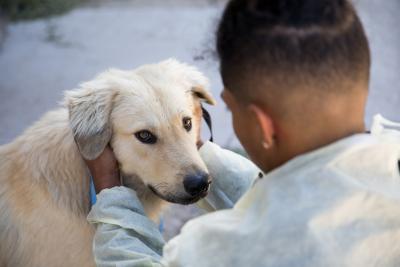
A little trust goes a long way
It goes without saying, but we’ll say it anyway. All animals — human and non-human alike — require feelings of safety and trust in order to grow and thrive. While the dramatic increase in lifesaving at the fellow shelters speaks for itself, a number of intangible lessons and goals came out of the pilot phase of the program. Things like changing public perception of shelters for the better, improving morale and easing compassion fatigue for shelter staff, and building trust between shelters and their community members, as well as between mentors and fellows.
In fact, the peer mentors overwhelmingly cited trust-building between teams as the most critical component of the program. “Building trust was probably the most important lesson we learned,” says Jill Mollohan, associate director at Virginia’s Lynchburg Humane Society, which was partnered with Catawba County Animal Services (CCAS) in North Carolina. “Once it was established that we were not there to judge, but just to help, they started opening up a lot more about the challenges they were facing.”
Jenna Arsenault, animal services manager at CCAS, agrees that it was key to establish trust with one another and with the community at large. “I was very skeptical about diving into social media at first,” Jenna says. “Our shelter never had a structured social media page before. We didn’t know what content was out there or what we should put out there. What messages are we trying to deliver? And how is the community going to respond?”
[Two volunteers, helping animals in countless ways]
That uncertainty was quickly replaced with feelings of empowerment as CCAS established its social media presence and was ultimately met with public support. “I think the community is feeling very involved. We’re sharing adoptable animals and success stories,” says Jenna. “It’s helped with volunteer recruitment and helped us establish new programs for veterans to come into the shelter. It’s brought the community into our building.”
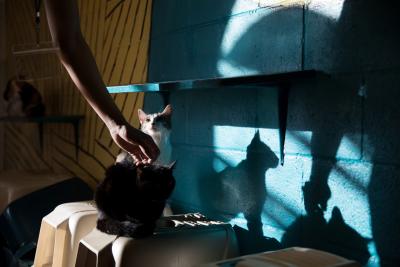
Friends helping friends who help animals
While the shelter collaborative program is focused on creating and sustaining long-term lifesaving change at fellow shelters, short-term relief for the staff at those shelters can be an integral part of that change. For example, at the end of 2020, just before the pilot launch, 27 adoptable animals, including a chocolate-colored puppy named Sugar Baby, hitched a ride from TPAS to its peer mentor, Brandywine Valley SPCA, providing instant relief and hope for the Tangipahoa staff.
Carrie Ducote, national senior strategist for the shelter collaborative program, notes: “While animal transfers aren’t a main focus of the program, they alleviate immediate shelter space concerns so that staff can work on implementing other programming.”
The night before the transport of Sugar Baby and the other pets, TPAS director Chip Fitz made a short thank-you video about the experience. Tearing up as he made eye contact with staff members in the room, Chip looked into the camera and said, his voice shaking: “Tomorrow morning, we’ve got 27 animals leaving here bright and early for Brandywine. So, my crew that comes in at eight o’clock in the morning is going to walk into a completely empty adoption facility for the first time. We can’t thank everyone involved enough.”
Thanks to the shelter collaborative program, just 12 months later, the team at TPAS had saved the lives of an additional 3,279 pets. “Wellness and mental health for shelter staff is emerging as a big theme lately,” says Kristan McCormick, national strategist for the shelter collaborative program. “Staff at some fellow shelters are shifting from having to spend significant portions of their days euthanizing animals, which takes a toll, so we’re exploring ways to provide more support to staff experiencing this big shift.”
With every success story that comes out of these innovative partnerships, staff morale goes up. For example, when a community cat named Leela (who was too injured to be returned to the location where she had been found) was saved thanks to the match between Pinellas County Animal Services (PCAS) and peer mentors Jacksonville Humane Society and Friends of Strays, the team’s delight was palpable. In the first month of the program, the organizations jointly established the Pinellas Cats Alive! program, which diverts all community cats through Friends of Strays, relieving pressure on PCAS and its tireless staff, and saving the lives of more cats. It’s a win-win.
As for Leela? She received extended medical treatment at Friends of Strays, and one of the PCAS volunteers who had been following her recovery eventually adopted her. That’s more than a little bit awesome.
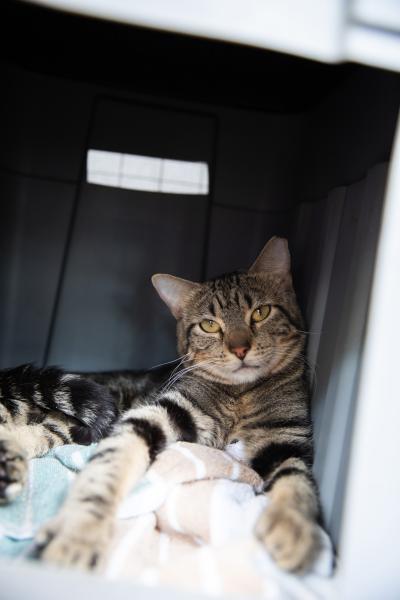
Scaling up success nationwide
This year, the Prince and Paws Shelter Collaborative Program is being scaled up substantially. In just the first three months, 19 mentoring matches were facilitated across 13 states. Brent emphasizes the lifesaving importance of the program: “This is how we solve getting to no-kill for every shelter, in every community, especially in some of those central states like the Dakotas, Kansas and Missouri. There are 2,000 or so no-kill shelters in the U.S. right now. This is the critical juncture. If every no-kill shelter picked one fellow shelter to partner with and mentor, we’d be at no-kill quickly.”
[North Dakota shelter steps up to help others]
Carrie adds, “Some shelters have tremendous potential for collaborating with and supporting shelters in their own county or state. For others, especially those in northeastern states with more resources and fewer animals pouring in, it’s eye-opening to learn more about the reality of what high-intake, low-resource shelters in the South are facing.” Kristan says, “We want more people to take an interest in what’s happening in shelters, wherever they are.” After all, the best matches have the power to save lives. A lot of them, in fact.
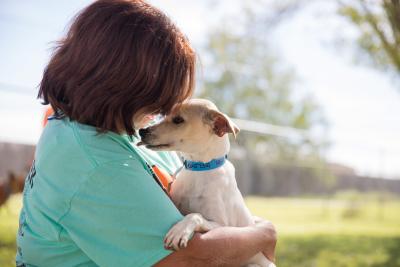
This article originally appeared in Best Friends magazine. You can subscribe to the magazine by becoming a Best Friends member.
Make a difference in your community
Be a voice for homeless pets by joining the 2025 Action Team.
Read more
5 animal shelters with soaring cat save rates
Embed program helps California kitten rescue expand fundraising
Bilingual outreach results in 200 pet adoptions in south Texas